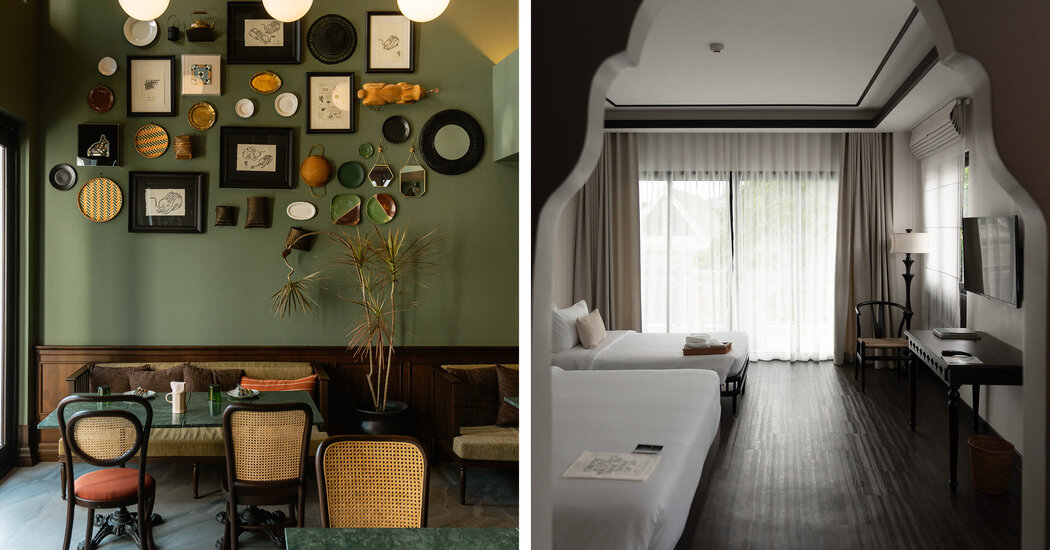Welcome to the T List, a newsletter from the editors of T Magazine. Each week, we share things we’re eating, wearing, listening to or coveting now. Sign up here to find us in your inbox every Wednesday. And you can always reach us at tlist@nytimes.com.
Visit This
A Minimalist Retreat in Chiang Mai
Chiang Mai, ensconced between the jungles and rice fields of Thailand’s mountainous north, has emerged as the country’s creative capital over the past few years. Recent openings, including the contemporary craft hub Kalm Village and the grocery, coffee shop and community space the Food Trust CNX, riff on the region’s rich cultural and culinary heritage with 21st-century takes on traditional crafts and recipes (the latter serves pizzas with northern Thai sai oua sausage and nam prik noom chile relish). The new Burirattana Hotel, opened in the heart of Chiang Mai’s moated Old Town, has added architecture to that self-referential mix. Both its name and design draw inspiration from the nearby Khum Chao Burirat House, a late 19th-century royal residence that fuses European-style arcades and stuccoed brick walls with Lanna kingdom hallmarks such as balustrades from carved teak and a roof bedecked with clay tiles. The Burirattana turned its canvas, a four-story former warehouse, into a similarly duotone structure with a base in white plaster and a teak-covered top floor. The renovated space sits alongside a newly built L-shaped wing that hugs a courtyard swimming pool. Inside, the 42 rooms are sleekly monochrome, furnished with an assemblage of Hans Wegner Wishbone chairs, wooden desks with reeded legs and cushions covered in local textiles. “We wanted to create a simple yet beautiful retreat within Chiang Mai’s historical infrastructure,” says the property’s co-owner and brand director Khrongkhwan Kongprasert. “Many people come here in search of the slow life — the combination of today’s minimalist aesthetics with the cultural ideas of Lanna provides a perfect backdrop for that.” Rooms from $86, burirattanahotel.com.
“The only way out of the human rabbit warren,” wrote the Austrian American architect and critic Bernard Rudofsky in his 1977 book, “The Prodigious Builders,” “is, quite simply, down the rabbit hole.” One of the chapters in that book, “In Praise of Caves,” now lends its name to a new exhibition at the Noguchi Museum in Queens. The exhibition, which runs through February, focuses on the work of four Mexican…
Click Here to Read the Full Original Article at NYT > Travel…
